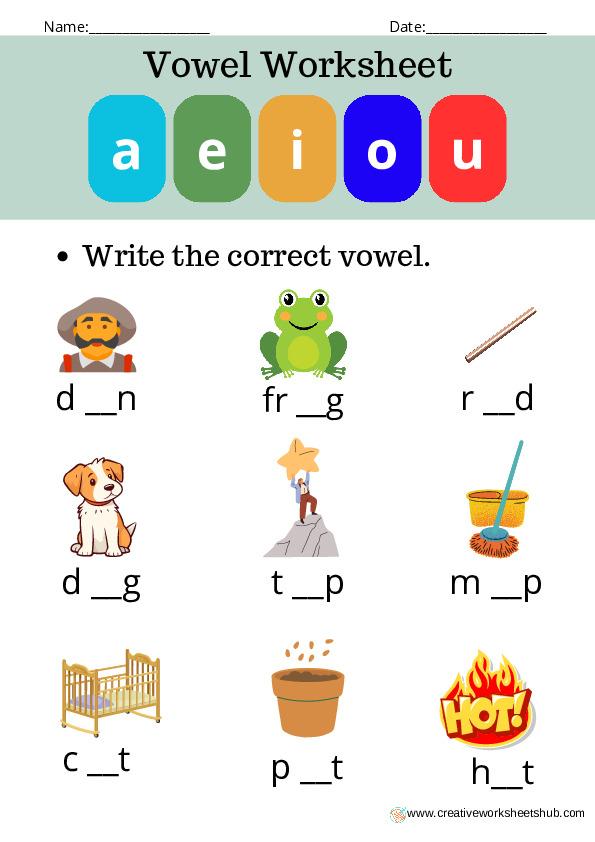Vowel Worksheet for Grade 1:
Introduction: Vowels are essential components of the English language. They are the building blocks of words and play a crucial role in helping us communicate effectively. In this Grade 1 lesson, we will explore what vowels are, why they are important, and how to identify them.
What Are Vowels?
- Vowels are the letters A, E, I, O, and U. These letters are special because they represent speech sounds that are made without any significant constriction or closure of the mouth, throat, or lips.
- Unlike consonants, which involve some obstruction of airflow, vowels are produced with an open vocal tract, allowing air to flow freely.
Why Are Vowels Important?
- Vowels are like the glue that holds words together. They provide the core sounds that help form words and give them meaning.
- They play a significant role in word pronunciation. Changing a vowel sound in a word can completely change its meaning.
- Vowels help create syllables, which are the building blocks of words. Syllables help us read and pronounce words correctly.
Identifying Vowels:
- To recognize vowels, we need to look for the letters A, E, I, O, and U in words.
- A simple trick to remember them is the acronym “AEIOU,” which stands for All Elephants In Our Underwear. It can help you recall the vowel letters.
- Practice identifying vowels in everyday words. For example, in the word “cat,” the vowel is “a,” and in “dog,” it’s “o.”
Short and Long Vowels:
- Vowels can have two different sounds: short and long.
- Short vowels are pronounced briefly and have their natural sound. For example:
- A in “cat” sounds like “æ.”
- E in “pen” sounds like “ɛ.”
- I in “sit” sounds like “ɪ.”
- O in “hop” sounds like “ɑ.”
- U in “cub” sounds like “ʌ.”
- Long vowels are pronounced for a longer duration and often say their name. For example:
- A in “cake” sounds like “a.”
- E in “see” sounds like “i.”
- I in “bike” sounds like “aɪ.”
- O in “home” sounds like “oʊ.”
- U in “cube” sounds like “ju.”
Practice:
- Try pronouncing words with both short and long vowels.
- Create lists of words with short and long vowel sounds.
- Play word games and read books to practice identifying vowels in words.
Conclusion: Vowels are the heart of the English language. They help us form words, convey meaning, and communicate effectively. By understanding and practicing vowels, Grade 1 students can strengthen their reading and pronunciation skills, setting a solid foundation for their language journey. Keep practicing, and soon you’ll become a vowel expert!
Here we are providing some Vowel Worksheet for Grade 1.To get these worksheets please click on the given images.






